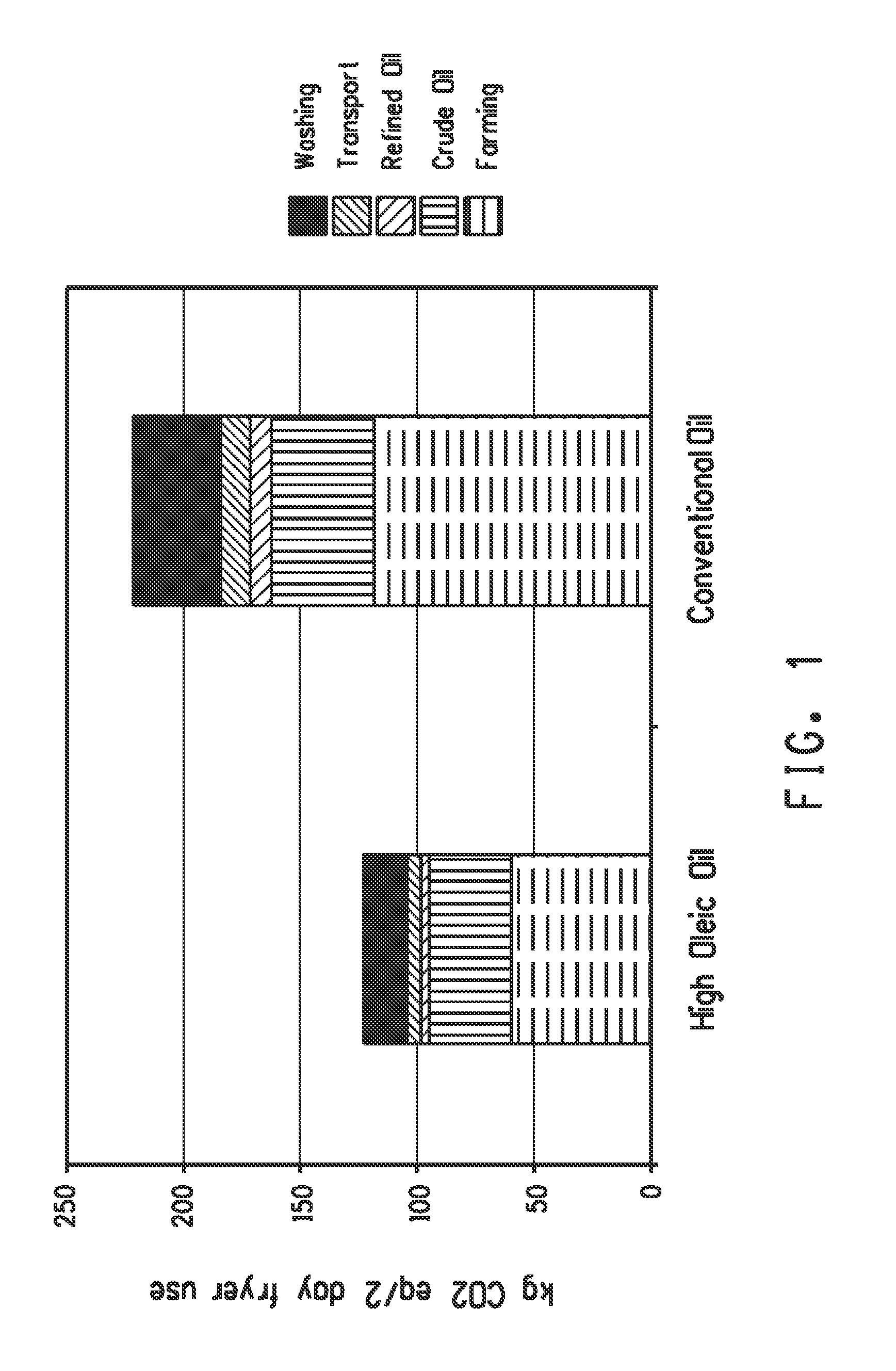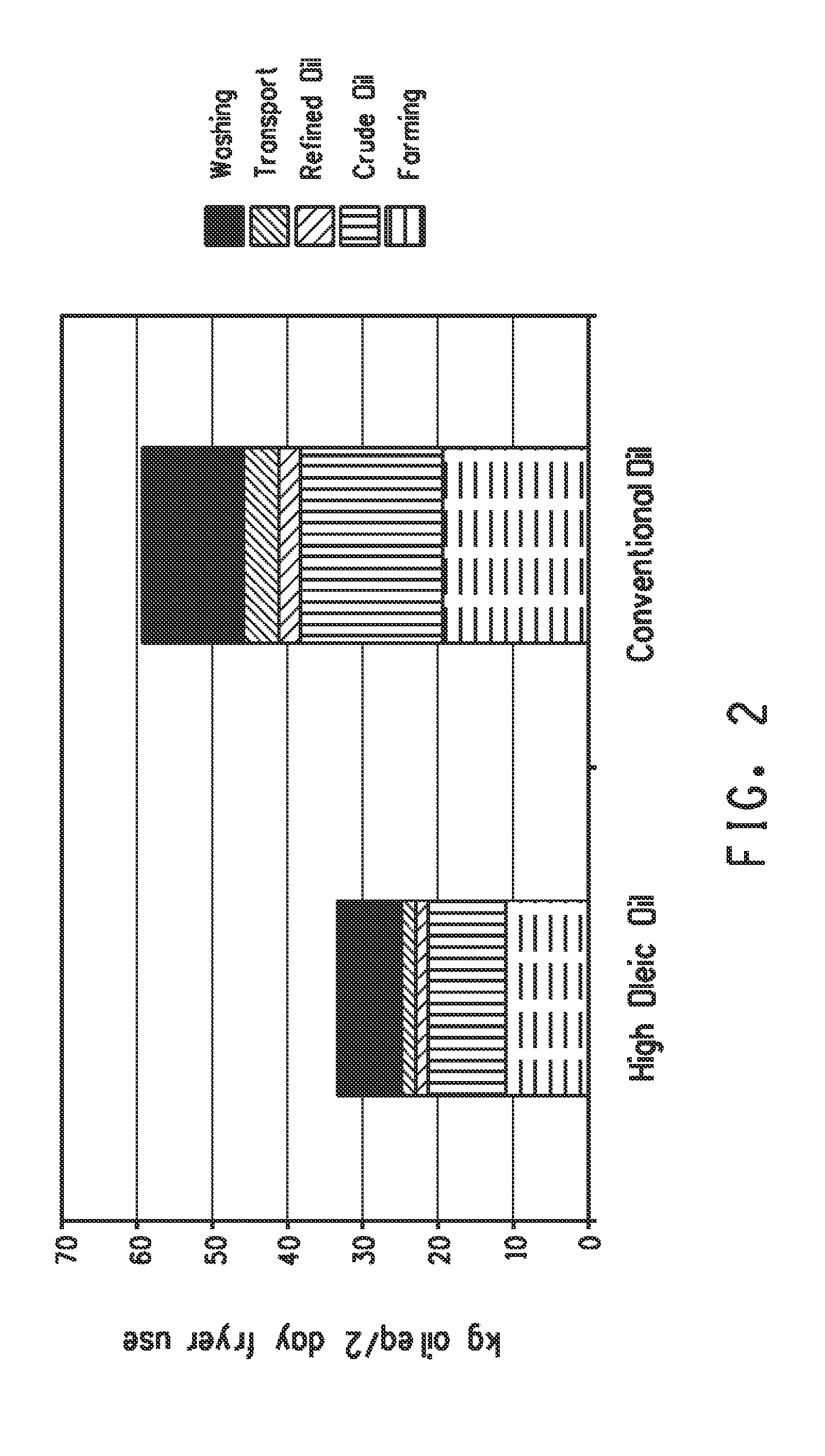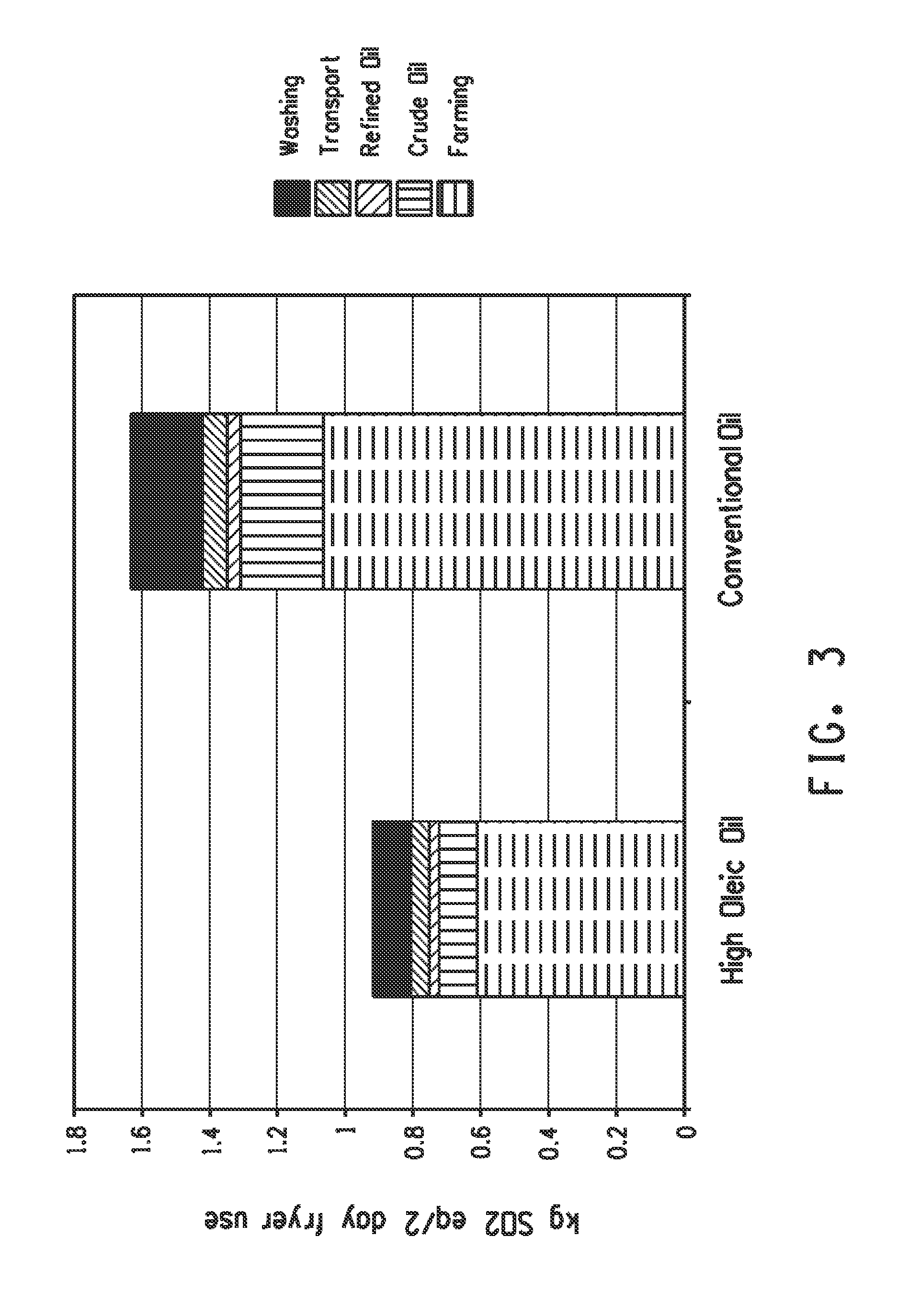Environmentally sustainable frying oils
a frying oil and sustainable technology, applied in the field of environmental protection frying oil, can solve the problems of unstable oil, easy oxidation and rancidity, unsuitable for many applications, etc., and achieve the effects of reducing environmental impact, reducing environmental impact, and increasing oleic acid conten
- Summary
- Abstract
- Description
- Claims
- Application Information
AI Technical Summary
Benefits of technology
Problems solved by technology
Method used
Image
Examples
third embodiment
In a third embodiment, the invention concerns an environmentally preferred frying oil obtained from a high oleic oilseed. The oilseed is one selected from the group consisting of: soybean, palm, peanut, canola, sunflower, corn, flax, cotton, and safflower.
[0035]In a another embodiment, the invention concerns an environmentally preferred frying oil, wherein the oleic acid content of said oil comprises at least 60% of the fatty acid moieties in the oil.
[0036]In yet another embodiment, the invention concerns a method for frying with a reduced impact on the environment, comprising:
using an oil with an increased oleic acid content when compared to an ordinary oil.
[0037]A further embodiment of the invention concerns a method for frying with a reduced impact on the environment, comprising using an oil with an increased oleic acid content when compared to an ordinary oil and quantifying the reduction in environmental impacts when using a frying oil with an increased oleic acid content compa...
example 1
Transformation of Soybean (Glycine max)
Embryo Cultures and Regeneration of Soybean Plants.
[0172]Soybean embryogenic suspension cultures are transformed by the method of particle gun bombardment using procedures known in the art (Klein et al. (1987) Nature (London) 327:70-73; U.S. Pat. No. 4,945,050; Hazel et al. (1998) Plant Cell. Rep. 17:765-772; Samoylov et al. (1998) In Vitro Cell Dev. Biol.-Plant 34:8-13). In particle gun bombardment procedures it is possible to use purified 1) entire plasmid DNA or, 2) DNA fragments containing only the recombinant DNA expression cassette(s) of interest.
[0173]Stock tissue for transformation experiments are obtained by initiation from soybean immature seeds. Secondary embryos are excised from explants after 6 to 8 weeks on culture initiation medium. The initiation medium is an agar-solidified modified MS (Murashige and Skoog (1962) Physiol. Plant. 15:473-497) medium supplemented with vitamins, 2,4-D and glucose. Secondary embryos are placed in fl...
example 2
Fatty Acid Analysis of Soybeans
[0175]In order to determine altered fatty acid composition as a result of suppression of the fatty acid desaturase, the relative amounts of the fatty acids, palmitic, stearic, oleic, linoleic and linolenic, can be determined as follows. Fatty acid methyl esters are prepared from single, mature, somatic soybean embryos or soybean seed chips by transesterification. One embryo, or a chip from a seed, is placed in a vial containing 50 μL of trimethylsulfonium hydroxide and incubated for 30 minutes at room temperature while shaking. After 30 minutes 0.5 mL of hexane is added, the sample is mixed and allowed to settle for 15 to 30 minutes to allow the fatty acids to partition into the hexane phase. Fatty acid methyl esters (5 μL from hexane layer) are injected, separated, and quantified using a Hewlett-Packard 6890 Gas Chromatograph fitted with an Omegawax 320 fused silica capillary column (Supelco Inc., Cat#24152). The oven temperature is programmed to hold...
PUM
| Property | Measurement | Unit |
|---|---|---|
| Fraction | aaaaa | aaaaa |
| Fraction | aaaaa | aaaaa |
| Pressure | aaaaa | aaaaa |
Abstract
Description
Claims
Application Information
 Login to View More
Login to View More - R&D Engineer
- R&D Manager
- IP Professional
- Industry Leading Data Capabilities
- Powerful AI technology
- Patent DNA Extraction
Browse by: Latest US Patents, China's latest patents, Technical Efficacy Thesaurus, Application Domain, Technology Topic, Popular Technical Reports.
© 2024 PatSnap. All rights reserved.Legal|Privacy policy|Modern Slavery Act Transparency Statement|Sitemap|About US| Contact US: help@patsnap.com










